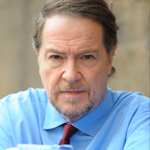John Whitehead's Commentary
Has the First Amendment Become an Exercise in Futility?

“The First Amendment was intended to secure something more than an exercise in futility.”—Justice John Paul Stevens, dissenting in Minnesota Board for Community Colleges v. Knight (1984)
Living in a representative democracy such as ours means that each person has the right to stand outside the halls of government and express his or her opinion on matters of state without fear of arrest. That’s what the First Amendment is all about.
It gives every American the right to “petition the government for a redress of grievances.” It ensures, as Adam Newton and Ronald K.L. Collins report for the Five Freedoms Project, “that our leaders hear, even if they don’t listen to, the electorate. Though public officials may be indifferent, contrary, or silent participants in democratic discourse, at least the First Amendment commands their audience.”
As Newton and Collins elaborate:
“Petitioning” has come to signify any nonviolent, legal means of encouraging or disapproving government action, whether directed to the judicial, executive or legislative branch. Lobbying, letter-writing, e-mail campaigns, testifying before tribunals, filing lawsuits, supporting referenda, collecting signatures for ballot initiatives, peaceful protests and picketing: all public articulation of issues, complaints and interests designed to spur government action qualifies under the petition clause, even if the activities partake of other First Amendment freedoms.
Unfortunately, through a series of carefully crafted legislative steps, our government officials—both elected and appointed—have managed to disembowel this fundamental freedom, rendering it with little more meaning than the right to file a lawsuit against government officials. In the process, government officials have succeeded in insulating themselves from their constituents, making it increasingly difficult for average Americans to make themselves seen or heard by those who most need to hear what “we the people” have to say.
Indeed, while lobbyists mill in and out of the homes and offices of Congressmen, the American people are kept at a distance through free speech zones, electronic town hall meetings, and security barriers. And those who dare to breach the gap—even through silent forms of protest—are arrested for making their voices heard. The case of Harold Hodge is a particularly telling illustration of the way in which the political elite in America have sheltered themselves from all correspondence and criticism.
On a snowy morning on January 24, 2011, Harold Hodge walked to the plaza in front of the U.S. Supreme Court building with a sign around his neck. The 3’ x 2’ placard read: “The U.S. Gov. allows police to illegally murder and brutalize African Americans and Hispanic people.” Hodge, a 45-year-old African-American, stood silently at attention in front of the building displaying his message. There weren’t many passersby, and he wasn’t blocking anyone’s way. However, after a few minutes, Hodge was approached by a police officer for the Supreme Court. The officer informed Hodge that he was violating a law prohibiting expressive activity in and around the Supreme Court building and asked him to leave.
According to federal law (U.S. Code 40 U.S.C. § 6135), “It is unlawful to parade, stand, or move in processions or assemblages in the Supreme Court Building or grounds, or to display in the Building and grounds a flag, banner, or device designed or adapted to bring into public notice a party, organization, or movement.” The penalty for violating this law is a fine of up to $5,000 and/or up to 60 days in jail.
Hodge, steadfast in his commitment to peaceably exercise his right to assemble and petition his government, politely refused. Over the course of some 35 minutes, several more police officers gathered and began to slowly circle Hodge. After ordering Hodge two more times to disperse, the officers placed Hodge under arrest, handcuffing his hands behind his back and leading him to a holding cell within the Supreme Court building.
Hodge is not the only person to be arrested for demonstrating in front of the Supreme Court building. Recently, 14 anti-death penalty demonstrators were arrested for unfurling a banner on the Supreme Court steps. In October 2011, Dr. Cornel West, the Princeton University philosopher and activist, was arrested on the steps of the Supreme Court while protesting the influence of corporate money on the political process. In January 2008, 34 demonstrators protesting the indefinite detention of inmates at Guantanamo Bay were arrested for demonstrating outside the Supreme Court. D.C. Superior Court Judge Wendell P. Gardner Jr. stated that most of those demonstrators would be sentenced to probation, but that he would perhaps jail those who had prior convictions for civil disobedience so that they would stop doing “the same thing over and over.”
This desire to insulate government officials from those exercising their First Amendment rights stems from an elitist mindset which views them as different, set apart somehow, from the people they have been appointed to serve and represent. It is nothing new.
The law under which Harold Hodge was prosecuted was enacted by Congress in 1949. Since then, interactions with politicians have become increasingly manufactured and distant. Press conferences and televised speeches now largely take the place of face-to-face interaction with constituents. For example, in 2011, 60 percent of Congressmen did not schedule a town hall meeting with their constituents during their summer recess. Other Congressmen, such as Rep. Paul Ryan (R – WI), held luncheons instead, charging $10 to $35 per admission ticket. Meanwhile, politicians in Virginia have considered changing the meeting rules for their public officials, making it possible for officials to “meet” electronically or by phone, thus eliminating the two-way dialogues and face-to-face interactions that are inherent to a physical meeting.
Additionally, there has been an increased use of so-called “free speech zones,” designated areas for expressive activity used to corral and block protestors at political events from interacting with public officials. George W. Bush used “free speech zones” excessively during his first term as president and both the Democratic and Republican parties have used them at various conventions to mute any and all criticism of their policies.
Perhaps the most egregious instance of imposing a free speech zone upon protesters came in 2004 at the Democratic National Convention. It was there that Boston Police constructed a cage of jersey walls and chain link fences out of sight of the convention center into which protesters were huddled. After seeing the designated area, Judge Douglas Woodlock stated, “One cannot conceive of other elements put in place to make a space more of an affront to the idea of free expression than the designated demonstration zone.” Such an area is obviously not designed to respect the American people’s right to free speech and to peaceably assemble and petition their government officials.
Clearly, the government has no interest in hearing what “we the people” have to say. Yet if Americans are not able to peacefully assemble outside of the halls of government for expressive activity, the First Amendment has lost all meaning. If we cannot stand silently outside of the Supreme Court or the Capitol or the White House, our ability to hold the government accountable for its actions is threatened, and so are the rights and liberties which we cherish as Americans.
That’s where Harold Hodge comes in. With the help of The Rutherford Institute, Hodge is now challenging the constitutionality of the statute barring silent expressive activity in front of the Supreme Court. It will be an uphill battle, given that it challenges the domain of the elite, but it’s a battle that must be fought.
The Supreme Court has already dismissed one challenge to the law. In United States v. Grace (1983), a case challenging the ban on expressive activity in front of the Supreme Court, the justices ruled that “[t]he Court grounds are not transformed into ‘public forum’ property merely because the public is permitted to freely enter and leave the grounds at practically all times and is admitted to the building during specified hours.”
Hopefully, freedom will win out in the end. As Justice John Paul Stevens noted in his dissent in Minnesota Board for Community Colleges v. Knight (1984):
We need not consider whether executives or legislators have any constitutional obligation to listen to unsolicited advice to decide this case. It is inherent in the republican form of government that high officials may choose—in their own wisdom and at their own peril—to listen to some of their constituents and not to others. But the First Amendment does guarantee an open marketplace for ideas—where divergent points of view can freely compete for the attention of those in power and of those to whom the powerful must account…
There can be no question but that the First Amendment secures the right of individuals to communicate with their government. And the First Amendment was intended to secure something more than an exercise in futility—it guarantees a meaningful opportunity to express one's views. For example, [the Supreme] Court has recognized that the right to forward views might become a practical nullity if government prohibited persons from banding together to make their voices heard. Thus, the First Amendment protects freedom of association because it makes the right to express one's views meaningful.
WC: 1513
ABOUT JOHN W. WHITEHEAD
Constitutional attorney and author John W. Whitehead is founder and president of The Rutherford Institute. His most recent books are the best-selling Battlefield America: The War on the American People, the award-winning A Government of Wolves: The Emerging American Police State, and a debut dystopian fiction novel, The Erik Blair Diaries. Whitehead can be contacted at staff@rutherford.org. Nisha Whitehead is the Executive Director of The Rutherford Institute. Information about The Rutherford Institute is available at www.rutherford.org.
Publication Guidelines / Reprint Permission
John W. Whitehead’s weekly commentaries are available for publication to newspapers and web publications at no charge. Please contact staff@rutherford.org to obtain reprint permission.



